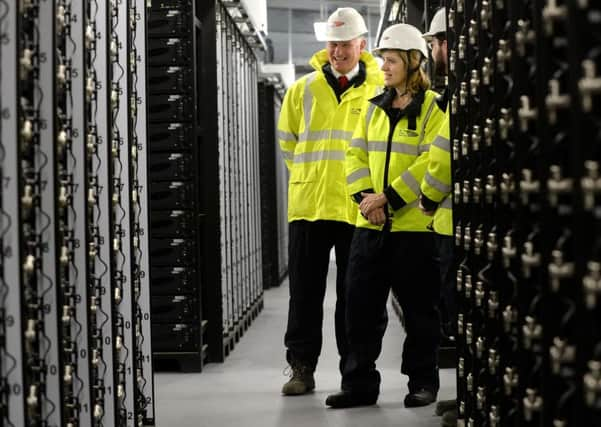Could Leighton's revolutionary '˜big battery' reduce power bills?


One year after its official launch, the Smarter Network Storage (SNS) facility, which is based at a UK Power Networks substation in Woodman Close, has already supported National Grid for more than 1,700 hours.
When it was activated it was hoped the cutting-edge electricity project costing £13.2 million could spark the end of Leighton’s frequent power failures in recent years.
Advertisement
Hide AdAdvertisement
Hide AdAlready, it has fed the local electricity network on more than 100 occasions – standing ready to provide power in the event of a national or local problem on the network.
The 6MW/10MWh “big battery” is now halfway through a two-year trial.
At this stage, UK Power Networks has already published expert recommendations on future regulatory and market frameworks for storage.
The company’s Martin Wilcox, head of future networks, said the first year of the trial had gone well overall, albeit with some teething issues.
Advertisement
Hide AdAdvertisement
Hide AdHe said: “The project has been carrying out a wide range of individual service trials, aimed at exploring the performance and relative value of different kinds of storage methods.
“While there have some teething issues due to its first-of-a-kind nature, to date it has clocked up more than 1,700 hours operation in commercial markets and we have learned a lot about typical performance of grid-scale storage.”
The team behind the innovative project has already made a number of recommendations to the Department of Energy and Climate Change and to the regulator Ofgem about market and regulatory changes which are needed to ensure energy storage is viable part of the Government’s ambition to move to a low carbon economy.
He said: “The Smarter Network Storage project has become the first new type of energy storage system to be participating in the UK balancing markets since the last pumped hydro power station was built in the 1970s – and the regulatory framework surrounding it pre-dates even that.
Advertisement
Hide AdAdvertisement
Hide Ad“One of the areas we are calling for change is the way energy storage is actually classified. Energy storage is not explicitly recognised as a discrete activity or asset class – unlike with the gas industry – and it is currently classed as ‘generation.’
“We recommend it be classified as a distinct ‘licensed’ activity to provide clarity within the regulatory framework for storage, recognising its distinct characteristics, and also removing some of the barriers to wider adoption of storage.
“Other recommendations include reconsidering whether current charging methods are appropriate for storage, developing arrangements for treatment of storage investment within price controls, and considering appropriate reactive power support mechanisms.”
Mr Wilcox added: “We have shared these recommendations with the Government and regulator Ofgem, as well as other stakeholders, and believe such measures will support the industry in assessing the full potential of electrical storage, enabling more efficient use of storage in the future and reducing overall costs for customers.”
Advertisement
Hide AdAdvertisement
Hide Ad> The 6MW/10MWh “big battery” is in a building which is the size of three tennis courts and can store enough energy to power about 6,000 homes for 1.5 hours at peak times (based on typical domestic max demand of 1kW) - that’s the equivalent of 435,000 cups of tea!